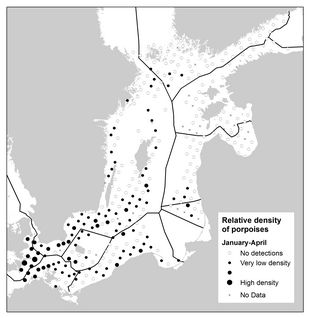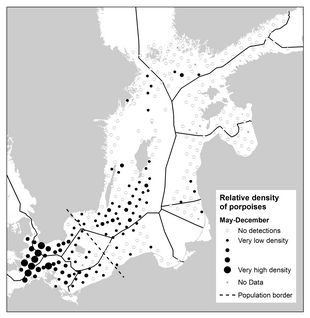Monitoring of the Baltic Sea harbour porpoise
| Name | Static acoustic monitoring of the Baltic Sea harbour porpoise |
| Sponsors | LIFE+ Nature Federal Agency for Nature Conservation Swedish Environmental Protection Agency Kolmården Wildlife Park National Fund for Environmental Protection and Water Finnish Ministry of the Environment WWF Finland Voivodship Fund for Environment al Protection and Water Särkenniemi Oy |
| Duration | January 2010 to September 2015 |
| Cooperation partners | Kolmårdens Djurpark Swedish Agency for Marine and Water Management Turku University of Applied Sciences Ministry of Environment Särkänniemi Adventure Park University of Gdansk Institute of Meteorology and Water Management Chief Inspectorate for Environmental Protection Department of Bioscience, Aarhus University Danish Forest and Nature Agency |
| Project management | Kolmårdens Djurpark |
| Project management GOM | Dr. Harald Benke |
| Project staff | ProMare Latvian Institute of Aquatic Ecology Coastal Research and Planning Institute AquaBiota Water Research RUWPA - Research Unit for Wildlife Population Assessment CREEM - Centre for Research into Ecological and Environmental Modelling Chelonia |
| Project staff GOM | Jens Koblitz, Katharina Brundiers Martin Jabbusch Sophie Hansen Karin T. Clausen Anja Gallus |
The aim of SAMBAH was the protection of the Baltic Sea harbour porpoise. In order to protect this population, it had to ascertain where the harbour porpoises occure seasonal in the inner Baltic Sea and whether we can distinguish them from the Beltsee population. By the help of nearly every country bordering the Baltic Sea and an intensive cooperation with COSAMM , for the first time echolocation signals of two years recording were analysed, abundances were definite and seasonal migration patterns were detected. At 304 measuring stations in the whole Baltic Sea were moored C-PODs (detectors for harbour porpoise noises) in 5 to 80 meters water depth. The data are used to create maps which show the distribution of the harbour porpoise population. There is a distinct separation between both populations (central Baltic Sea and western Baltic Sea) between May and December. This time comprise the breeding season, the birth season and a part of the lactation period.
The analysis of the collected click-sounds between May 2011 and May 2013 resulted the new discovery of a harbour porpoise’s reproduction area south of the Swedish island Gotland.

